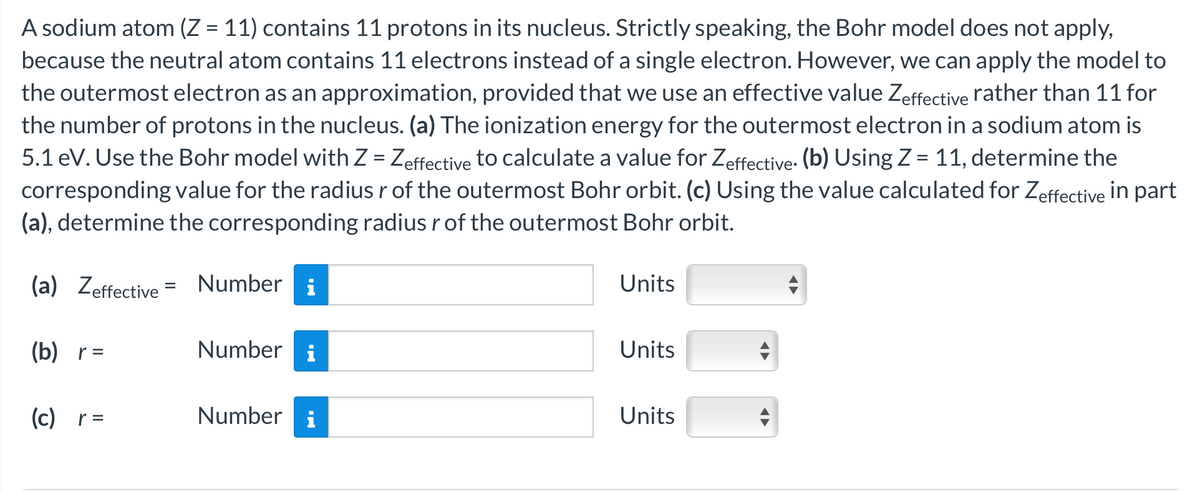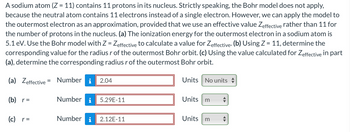A sodium atom (Z = 11) contains 11 protons in its nucleus. Strictly speaking, the Bohr model does not apply, because the neutral atom contains 11 electrons instead of a single electron. However, we can apply the model to the outermost electron as an approximation, provided that we use an effective value Zeffective rather than 11 for the number of protons in the nucleus. (a) The ionization energy for the outermost electron in a sodium atom is 5.1 eV. Use the Bohr model with Z = Zeffective to calculate a value for Zeffective. (b) Using Z = 11, determine the corresponding value for the radius r of the outermost Bohr orbit. (c) Using the value calculated for Zeffective in part (a), determine the corresponding radius r of the outermost Bohr orbit. (a) Zeffective = Number i (b) _r= (c) r= Number i Number i Units Units Units
Atomic Spectra
According to the Bohr model of an atom, the electron in an atom moves around a nucleus in fixed orbits with specific energies known as energy levels. The orbital energies are quantized. The electrons remain in these energy levels until they emit or absorb a photon of a particular wavelength, the quantum of energy. If the electron emits a photon, it then falls back to a lower energy level, and if it absorbs a photon, the electron rises to higher energy levels. The photons released or absorbed in these transitions of an electron are studied and analyzed on a screen as atomic spectra.
Ruby Lasers
Lasers are devices that emit light using atoms or molecules at a certain wavelength and amplify the light to produce a narrow beam of radiation. It works as per the principle of electromagnetic radiation. Their source of emission contains the same frequency and same phase. It was invented in the year 1960 by the great noble scientist, Theodore Maiman.
Balmer Series
The spectrum of frequency observed when electromagnetic radiation is emitted from an atom when it goes from higher energy state to lower state, is known as emission spectrum. This transition occurs when an excited electron moves from higher to lower state. It has many possible electron transitions and each transition has a specific energy difference.
Emission Spectrum
Every state of matter tries to be at minimum potential energy or it can be said that the atoms of element/ substance arrange themselves such that overall energy is minimum.

Trending now
This is a popular solution!
Step by step
Solved in 4 steps

Calcuations are incorrect, can I have help with explanation please







